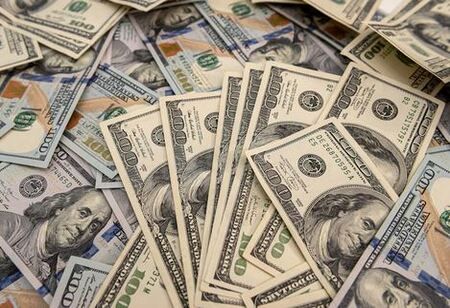
Dollar Set for Weekly Rise as Middle East Conflict Fuels Safe-Haven Demand


Uncertainties around a growing war in the Middle East and the possible effects on the global economy fueled demand for conventional safe havens, which led to the dollar's largest weekly increase in over a month.
As market players worry about potential U.S. attacks on Iran and the Israeli government tries to prevent Tehran's nuclear ambitions, the two countries have been engaged in a week-long air battle, which has caused the value of the dollar to rise.
The dollar index, which compares the value of the US dollar to six other currencies, such as the euro, the Japanese yen, and the Swiss franc, is expected to increase by 0.6 percent this week.
As Europe attempted to persuade Tehran to return to talks, Iran declared that it would not discuss the future of its nuclear program while Israel was attacking it.
In the meantime, the White House announced that President Donald Trump would make a decision within the next two weeks regarding the United States' possible involvement in the conflict.
Even if the possibility of a wider Middle East conflict restrained risk appetite, that helped calm anxious investors who were afraid of an impending U.S. attack on Iran.
Although the price of Brent crude dropped more than two percent, it was still near the January top last week at $77 per barrel.
Also Read: Soil Based Microbial Fuel Cells Could Protect the Environment from Flammable Chemicals
The decline helped currencies like the euro and the yen that import net amounts of oil. The yen remained unchanged at 145.44 to the dollar, while the euro strengthened 0.2 percent to $1.1519.
For central banks around the world that have been battling the possible effects of US tariffs on their economy, the recent surge in oil prices brought another level of inflation anxiety.
The central bank's statement was interpreted by analysts as a "hawkish tilt" that strengthened the dollar's advances this week.
With the country's central bank cutting interest rates to zero percent, the Swiss franc was poised for its biggest weekly decline since mid-April, but it remained stable at 0.817 to the dollar.
However, Norges Bank's surprise 25 basis point interest rate drop surprised investors, and the krone is down more than one percent versus the dollar this week.
Even though this week's market focus was primarily on global tensions, as Trump's early July tariff deadline approaches, worries about a trade war and its potential effects on costs, business profitability, and overall growth remain constant. The dollar is down almost nine percent this year as a result of these worries.
Also Read: Divulging the Apex of AI Innovation with the Top 5 Companies' Latest Language Models
The Australian and New Zealand dollars were essentially flat, whereas other currencies had a positive correlation with risk sentiment.